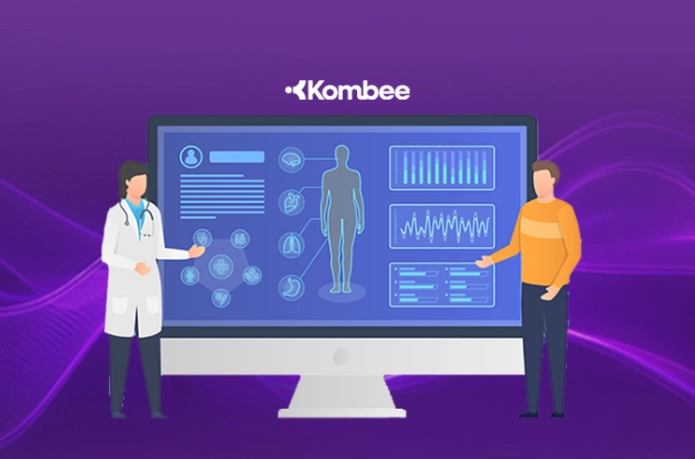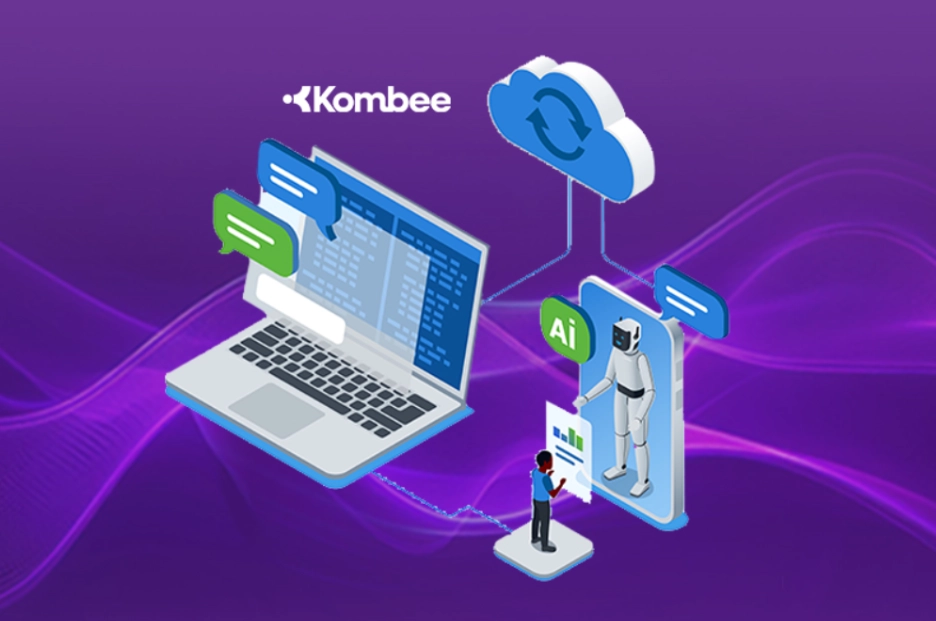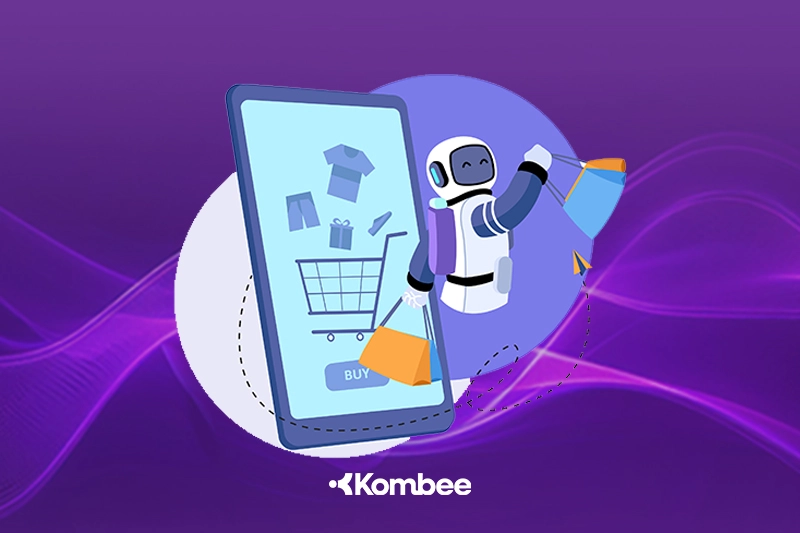Introduction
What if you could turn one-time shoppers into repeat brand advocates on autopilot, or even better, drive your repeat sales?
That is the magic of AI e-commerce personalisation. As McKinsey reports, 71% of consumers expect it, and 76% become frustrated when it's absent. That frustration becomes lost sales, abandoned carts, and one-time transactions that never come back. This emphasises that customers don't only like personalised shopping, they expect it.
So, companies that use artificial intelligence personalisation get the opposite: more repeat buys, better customer lifetime value, and more profound brand loyalty.
In this blog, let's discuss exactly how AI can create those repeat sales and how you can integrate it into your e-commerce strategy.
Why Repeat Customers Are the Secret to E-commerce Growth?
Let's discuss strategy before discussing tech.
According to Forbes, it costs 5x as much to gain a new customer than to retain an existing one. And repeat customers:
- Spend as much as 67% more per transaction
- They are most likely to convert on subsequent visits
- Drive word-of-mouth growth and higher ratings
- Need less continuing marketing expense
Your repeat customers are your greatest asset, and AI-powered e-commerce personalisation is how you keep them coming back.
Want to know how this could work for your store? Talk to our team at Kombee and see how AI can help you sell smarter.
What Artificial Intelligence Personalisation Does (and Why It Works)?
Artificial intelligence personalisation leverages machine learning, data analysis, and predictive modelling to learn about individual consumers and personalise their experience in real time.
Picture this: greeting each customer by name, knowing their taste, recalling their previous purchase, and recommending what they are looking for next, via email, site, SMS, and even in the store.
That is what AI enables, and it succeeds because it takes friction out and puts relevance in at each point of the buyer's journey.
And when embedded within an e-commerce headless CMS, these customised experiences load quicker, scale more efficiently, and sync perfectly across all channels and devices.
How Businesses Can Utilise AI to Personalise the Shopping Experience?

1. Dynamic Product Recommendations That Feel Natural
Amazon was the pioneer. Now, brands of all shapes and sizes utilise AI to drive intelligent product discovery. AI engines map click paths, purchase history, and browsing history to suggest:
- "You might also like" suggestions
- Cross-sells and upsells on product pages
- Complementary bundles at checkout
- Smartly ordered categories on the homepage
This increases AOV (average order value), lowers bounce rates, and gives each visitor a more edited experience—something AI e-commerce personalisation requires.
2. Behaviour-Based Email and SMS Campaigns
Generic emails won't cut it anymore. AI-powered flows are behaviour-triggered and hyper-personalised, such as:
- Abandoned cart messages with suggested add-ons
- Replenishment reminders for consumables
- "We miss you", emails prompted by dormant shoppers
- VIP notifications for loyal customers based on engagement score
These automations are customised by artificial intelligence personalisation platforms that monitor and forecast what customers are looking for and when they're looking for it.
3. Real-Time Incentives That Convert
Not all customers require the same promotion. AI analyses in-session behaviour and churn risk to serve up the correct message at the correct time:
- Discounts by loyalty level
- Urgency messaging is activated by low-stock interest
- Exit-intent offers tailored to cart size or product interest
You’re not blasting promotions. You’re nudging conversion with contextual relevance—a hallmark of AI e-commerce personalisation.
How Does E-commerce Headless CMS Make AI Even More Effective?
So, where does the e-commerce headless CMS fit in?
Unlike traditional platforms, a headless CMS separates your front end (what customers see) from your back end (where content and data live). This lets you:
- Display AI-powered recommendations faster
- Personalise each customer interaction in real-time
- Sync personalisation across websites, apps, email, and beyond
- A/B test experiences, messages, and layouts without dev delays
With a headless strategy, your personalisation plan isn't held back by platform limitations—it's future-proofed and scalable.
Let's tie it together—AI isn't just product recommendations. It optimises the whole customer journey, including:
- Guided shopping assistants that suggest based on history
- AI-driven chatbots that fix problems instantly and upsell cleverly
- Customised loyalty programs that reward discrete behaviour, not mere points
- Surprise and delight experiences, such as birthday promotions or re-engagement rewards
These experiences aren't merely delightful—they're strategic. They address the question at the heart of things:
Why is repeat purchase important to a business?
Because loyalty builds your brand, and AI allows loyalty to be scaled.
If you're deciding between platforms, check out Beyond the Hype: Is Headless CMS the Right Choice for Your Business? to see how headless architecture aligns with your objectives and when it's the optimal base for scalable, personalised e-commerce.
What Is the AI Data Stack You Need to Fuel E-commerce Personalisation?
To personalise effectively, AI requires high-quality data. This is what fuels your artificial intelligence personalisation engine:
- Clickstream data: What people click on, look at, and scroll through
- Purchase history: What people purchased, price sensitivity, frequency
- On-site behaviour: Time spent on site, number of pages viewed, cart activity
- CRM + Loyalty data: Engagement score, reward tier, support history
Combined with your e-commerce headless CMS, this data enables AI to create combined profiles and personalise on every channel.
To tap into AI's potential, you might also delve into findings from The Power of AI in Tech Business: Transforming Operations, Decision-Making, and Customer Experiences, which examines more deeply how AI can transform all aspects of your business beyond personalisation.
What Does the Future Hold for AI in E-Commerce?
In the future, personalisation will penetrate even further:
- AR and 3D product previews tailored to your environment
- Voice-driven shopping assistants are familiar with your past
- Cross-device personalisation that recalls preferences from mobile, web, and in-store
- Real-time ecommerce journey adaptation based on live user data
To be ahead of this future, companies must now spend on scalable, data-driven personalisation infrastructure, driven by artificial intelligence personalisation and built on adaptable platforms such as e-commerce headless CMS.
Conclusion
AI-driven e-commerce personalisation is revolutionising how companies interact with customers by providing personalised, real-time experiences that increase conversions and loyalty. With an e-commerce headless CMS, scaling these customised paths across channels is effortless, improving customer satisfaction and retention. Repeat buys are pivotal; they fuel lasting growth and profitability. With artificial intelligence-powered personalisation, companies can cease to guess and begin delivering precisely what their customers desire.
Want to discover how AI can transform your e-commerce strategy? Contact Kombee for expert advice on installing innovative personalisation solutions.
Frequently Asked Questions
1. What is the role of artificial intelligence in personalized marketing?
AI in retail enables businesses to analyze customer data and tailor marketing strategies. Artificial intelligence personalization helps deliver relevant content, offers, and recommendations to individuals, increasing engagement and conversions. It uses predictive analytics to understand consumer behavior and deliver targeted ads or promotions based on preferences.
2. What is AI used for in online shopping?
In online shopping, AI e-commerce personalization helps create customized experiences for customers. AI recommends products based on browsing history, purchase patterns, and preferences. It also enables chatbots for instant customer support and helps streamline inventory management, improving overall efficiency and satisfaction.
3. How is personalization done in e-commerce?
Personalization in e-commerce is achieved through AI e-commerce personalization, analyzing customer data to offer tailored product recommendations, dynamic pricing, and targeted promotions. Tools like ecommerce headless CMS allow businesses to create personalized, seamless experiences across multiple channels, boosting customer satisfaction and repeat purchases, which are crucial for business growth.






